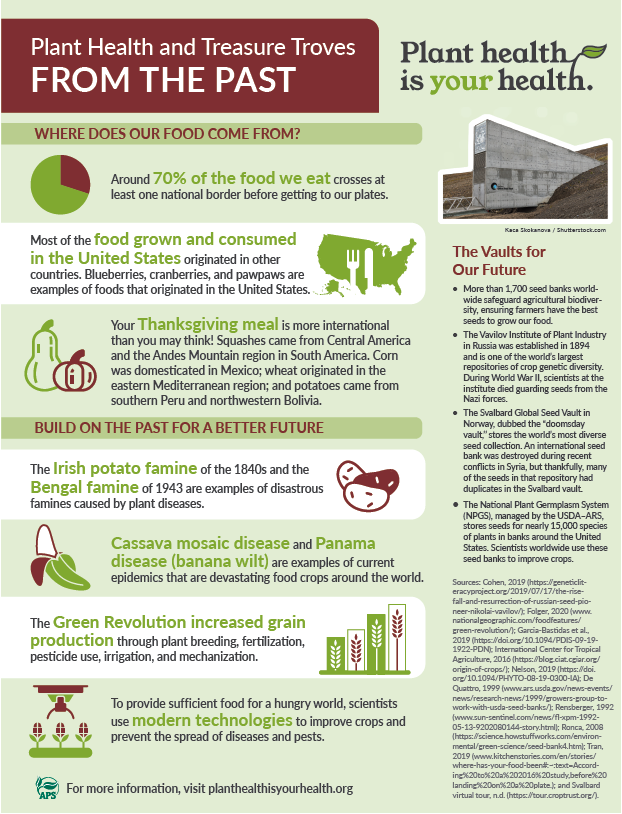Plant Health and Treasure Troves
In many cultures autumn is a time to celebrate the bounty of the field. U.S. Thanksgiving is November 26. Will you have a ‘traditional’ Thanksgiving meal this year? If so, you are enjoying crops that have diverse origins. In fact, the food crops that feed the world come from far-flung corners of the globe. But just like our food crops, plant diseases can be globetrotters. Potato Late Blight disease is caused by a fungus-like pathogen native to the Western Hemisphere. But the pathogen found a happy home in the cool and damp potato production fields of northern Europe, contributing to the Irish Potato Famine of the 1840s. Coffee rust threatens coffee production throughout Central and South America. But like coffee itself, the coffee rust pathogen is thought to come from East Africa. And Citrus Greening Disease or Huanglongbing was first discovered in China a century ago and today threatens citrus production in Florida and Brazil. Plant pathogens and the diseases they cause are on the move, threatening the foods we eat!

But science offers hope. Tapping into naturally-occuring genetic diversity is one way scientists are improving crop plants, making them more resistant to diseases and less dependent on pesticides. Plant pathologists work to identify genetic resistance to plant diseases in wild plants related to the crops we eat. Plant breeders may use molecular markers to breed this resistance into crop plants while eliminating the undesirable characteristics wild plants contribute. Molecular biologists streamline this process by cloning disease resistance genes from wild plants and adding them to high quality crop varieties. This method reduces undesirable genetic traits that can be introduced through traditional breeding and is especially useful for crop plants with distinct and recognizable characteristics such as the shape of a potato or the taste and texture of an apple. Still newer approaches, such as gene editing, promise faster and less disruptive changes to plant genes, achieving many of the same benefits of breeding or genetic engineering in less time and with greater accuracy. In these efforts, scientists rely on collections of wild plants preserved in genebanks around the globe. These resources are literally genetic treasure troves that are essential to the sustainable management of crop diseases
Want to help preserve genetic diversity and promote its use as a means of sustainable management of crop diseases? Tell your civic and government leaders that you support investment in plant science research and public funding of genebanks. Talk to your local Extension agents, university staff, or public garden professionals to learn more about how genetic diversity, plant breeding, and technological approaches are used for crop improvement. And share what you learn at the Thanksgiving table--it is a perfect opportunity to build support for the work of plant scientists.
Plant Health Is Your Health!
View Spanish Version
View Portuguese Version
